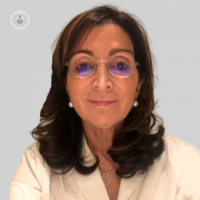Urticaria symptoms and treatment
Written by:Urticaria is a very frequent skin disease and its fundamental lesion is the habón. The hives are like hives, redheads that itch intensely and that swell. They are characterized by the fact that after hours they disappear and can reappear in another area of the body. The hips come out anywhere (eyelids, lips, limbs). However, those appearing on the palms of the hands and soles of the feet are the most annoying. Angioedema is also a clinical manifestation of urticaria, in which case the edema is maintained up to 48 hours. Anyone at any age can experience hives but is more common in middle - aged, adult - young women.
Acute urticaria and chronic urticaria
There are two types of hives:
- Acute urticarias that last less than 6 weeks are very common. 20% of the population may have throughout their life a day with acute urticaria. These can occur after the intake of certain medications such as aspirin or ibuprofen, or also triggered by insect bites or other stimuli. Acute urticaria is not necessarily due to an allergy involving non-allergic mechanisms.
- Chronic urticaria is the one that lasts more than 6 weeks. The episode can last from 6 months to 5 or even 10 years, the lesions are changing position and can appear hives every day. They affect 1-2% of the population. These chronic urticarias can be of two types: spontaneous or inducible. In spontaneous chronic urticaria, the hives come out because yes, without a specific stimulus and can be explained by an autoimmune mechanism, in fact in many occasions is associated with other diseases of this type such as hypothyroidism. Inducible chronic urticaria is caused by a specific stimulus: cold, heat, body temperature increase, ...
Treatment of urticaria
Urticaria is cured by rapid control of its symptoms, pruritus and hives. Although the treatment requires to be maintained for several months. Appropriate treatment is required as soon as possible. It is a disease that greatly affects the patient's quality of life. The goal of treatment is to get the person to live normal. With proper treatment, hives can be made to last less time , so that instead of three years, hives for example only appear during one, it is a question of reducing and redirecting episodes of hives as soon as possible.
The habón is the consequence of the activation of some cells that are in the dermis: the mast cells. When mast cells react to the stimulus release chemical mediators such as histamine and this is responsible for itching. It is recommended to treat urticaria with second generation antihistamines (do not give sleep). These stop redness, itching and swelling. You can take all the time you need. In case of exacerbations oral cortisone is administered, but never for more than 10 days. To treat hives, the indication for a new treatment omalizumab is currently accepted and is currently being registered.
It is important that the patient goes to his or her primary care physician or dermatologist for the examination, assessment of physical stimuli and a correct diagnosis of the disease. It must be treated as soon as possible so that it will not be prolonged in time. You have to control the symptoms and avoid the triggers if they are known.



